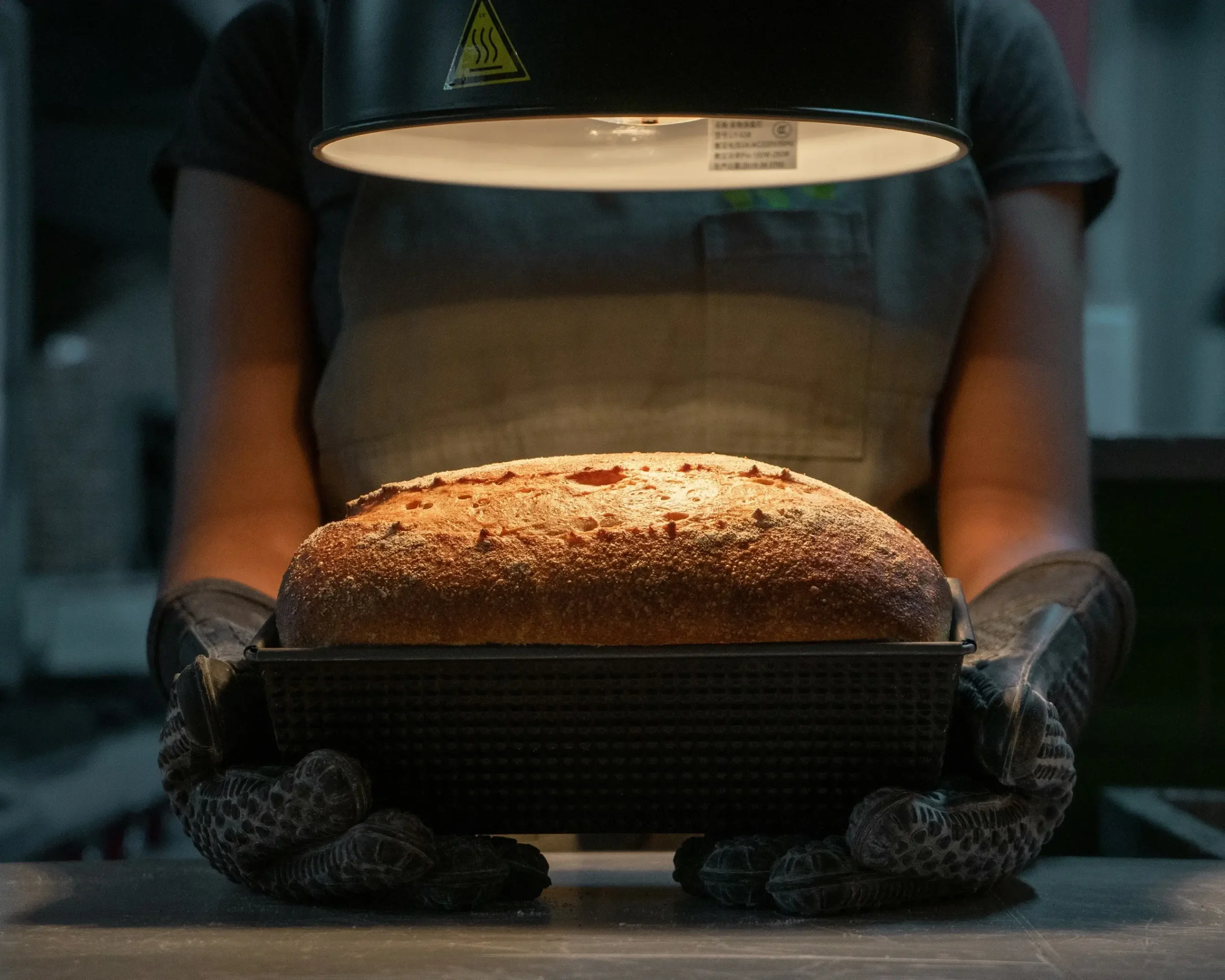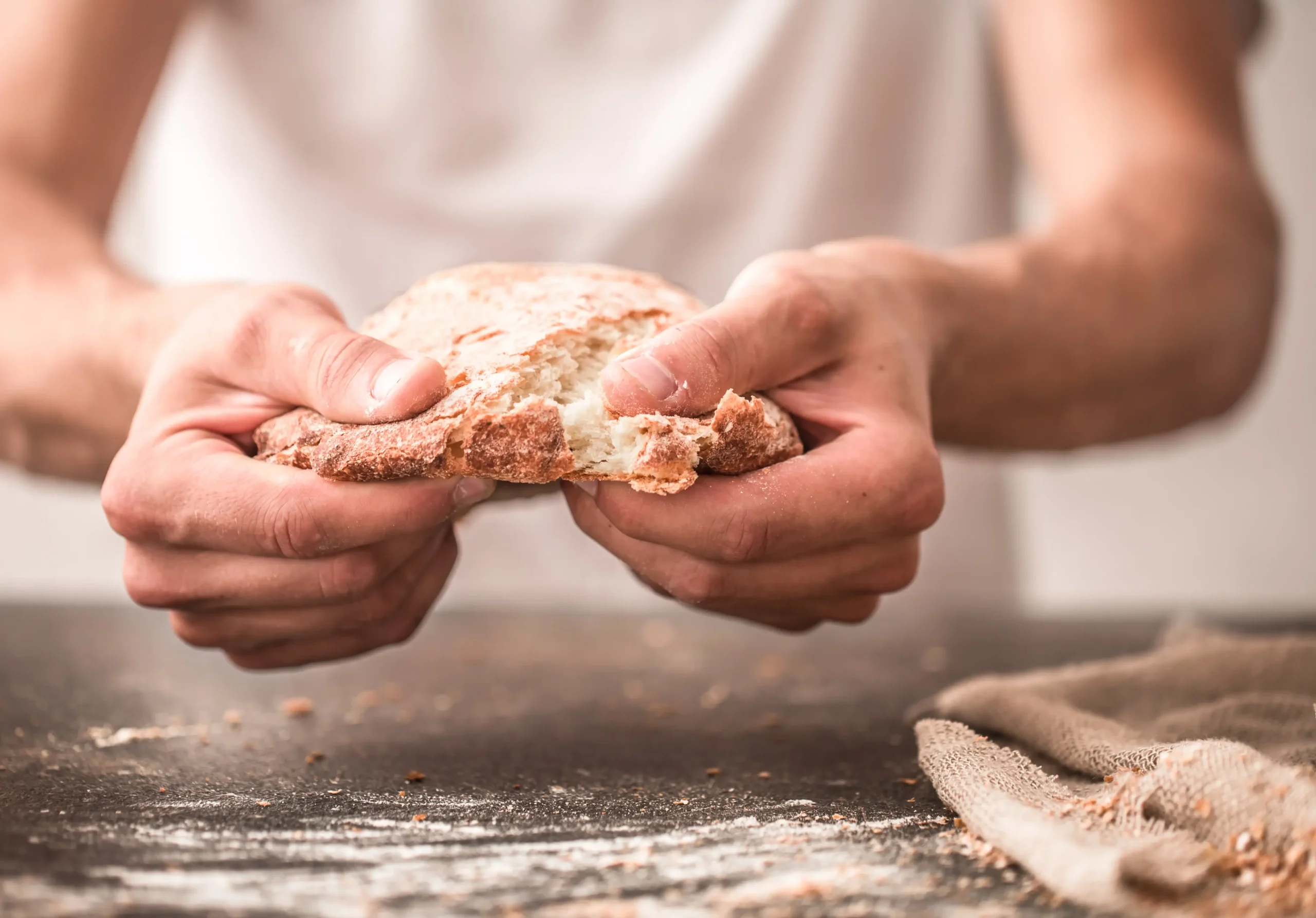The art of making that ideal sourdough loaf is one, but preserving that freshness is another. What if you could seal in that crunchy crust and chewy crumb for weeks? This step-by-step guide uncovers the easy, simple secrets of how to freeze sourdough bread.
Farewell to stale, wasted slices and hello to oven-fresh flavor at will. We’ll take you by the hand and demonstrate how to freeze sourdough bread so every slice tastes as great as the minute it emerged from the oven, saving you time and effort.

Why Freeze Sourdough Bread?
Is your lovely, crusty sourdough staling quicker than you can devour it? Freezing is your waste-busting secret. It’s the ultimate kitchen trick for saving the time and love you put into every loaf.
Picture keeping that ideal, just-baked freshness locked in for weeks, not days. Freezing puts the staling process on ice, locking in the characteristic tangy flavor, chewy crumb, and crunchy crust that make sourdough so appealing.
Best of all, you’ll always have an emergency supply of great bread waiting in the wings at the drop of a hat. For last-minute guests or a hurried weeknight dinner, your ideal slice is never more than minutes from the freezer.
How Long Can You Freeze Sourdough Bread?
So you’re ready to save that perfect loaf, but what’s the real shelf-life in the freezer? While it can technically last longer, the golden window for peak flavor and texture is between two to three months.
Beyond this time, you risk the horror of freezer burn, which will dehydrate the bread and change its characteristic flavor. The trick to reaching that three-month milestone without compromising on quality lies in your preparation.
Finally, how tightly you wrap the bread and the consistency of your freezer temperature are the largest determinants. Ensuring these are done properly is key to having each thawed slice be a tasty one.
How to Freeze Sourdough Bread
It takes skill to freeze sourdough bread, and that skill reduces to one important detail: sealing it airtight. Oxygen is the nemesis of fresh bread, and these techniques keep your bread sealed away from freezer burn and lost flavors.
Freezing a Whole Loaf
For long-term storage, freezing the whole loaf is your best option. Begin by allowing the bread to cool completely—this is not optional to avoid sogginess. Next, wrap it tightly in a layer of plastic wrap, then a second layer of heavy-duty foil or a large freezer-safe bag.
This two-barrier technique traps moisture and is perfect for maintaining the interior texture of the loaf. When you’re ready, you can re-warm the entire loaf in the oven for that “fresh out of the oven” feeling everyone adores.
Freezing Sliced Sourdough Bread
If convenience is your goal, freezing pre-sliced bread is a game-changer. Simply slice your cooled loaf to your desired thickness. For easy separation later, place a small square of parchment paper between each slice.
Carefully layer the slices and push them into a large, zip-top plastic freezer bag. Remove as much air as possible before sealing it tight. This is ideal for pulling out a slice or two for instant toast or sandwiches without thawing the whole loaf.
Preventing Freezer Burn
The key to avoiding dry, icy bread is to block all air from reaching its surface. Your best defense is the double-wrap technique mentioned above—think of it as armor for your sourdough.
For ultimate protection, a vacuum sealer is unparalleled. By removing every bit of air, it creates a perfect environment that can extend freshness even further. Proper wrapping is the most important step in how to freeze sourdough bread successfully.
How to Thaw Sourdough Bread
You’ve successfully frozen your loaf—now it’s time to bring it back to its delicious, freshly baked glory. The method you choose depends entirely on whether you’re reviving a whole loaf or just need a quick slice.
Whole Loaf
For a whole loaf, you simply leave it wrapped on the counter for 4-6 hours until it warms to room temperature. This is simple, but it won’t revive that characteristic crispy crust by itself.
The better choice is the oven refresh. Thaw the loaf on the counter for an hour, then lightly spritz it with water. Bake straight on the rack at 375°F (190°C) for 10-15 minutes to restore that ideal crackly crust.
Sliced Bread
Need a slice for toast right now? This is where your prep work pays off. There’s no need to thaw sliced sourdough at all.
Simply pull a frozen slice (or two!) from the freezer bag and pop it directly into your toaster or toaster oven. In just a couple of minutes, you’ll have a perfectly warm and toasty piece, ready for your favorite toppings.

How to Refresh Sourdough Bread After Freezing
Thawing is merely half the story; the magic lies in the refresh. This last step is the one that restores the that familiar crackly crust and the warm, soft crumb, so your bread tastes freshly baked even just after a few minutes.
For the final rebirth, the oven is your ally. Gently spritz the thawed loaf with water and put it in a preheated oven at 375°F (190°C) for 5 to 10 minutes. This brief shot of heat is the key to a perfectly crisp crust.
For single slices, a toaster or hot dry skillet is instant gratification. If you’ve already got down the freezing of sourdough bread in sliced form, this is your quick go-to for a tasty piece. One final important tip: always allow the bread to rest for a few minutes after heating to avoid a gummy texture.
Can You Freeze Sourdough Starter or Dough?
Although being able to freeze sourdough bread is a game-changer, what do you do with freezing its essential components? Yes, one can freeze dough and starter, but the technique and outcome are very different from freezing an already baked loaf.
For your starter, freezing is the ultimate backup plan. Just feed it until it’s bubbly, then pour a thin layer on parchment paper or into an ice cube tray. Once frozen, move the frozen starter to an airtight bag for long-term backup storage.
Freezing raw dough is more difficult, since the cold will destroy some of the wild yeast, which might impact the end rise. If you decide to do so, freeze the dough immediately after its initial proof and expect a slightly denser end loaf.
To reawaken a frozen starter, thaw it out in the refrigerator overnight and then take it to room temperature. Resume your normal feeding routine; it might take two or three days of continuous feedings for it to become vigorous and bubbly once again.
Tips for Success
Getting it right with freezing sourdough bread is all about the little things. Add these three easy habits to your routine, and you’ll ensure a perfectly preserved, tasty loaf every time.
First, practice patience: always allow your bread to cool to room temperature before wrapping. Freezing a warm loaf seals in steam, which turns into ice crystals and results in a soggy, disappointing texture when thawed.
Then, take a marker and mark everything. Writing the date clearly on the freezer bag or foil keeps you aware of freshness and allows you to use your oldest loaves first, avoiding any forgotten, freezer-burned surprises.
Lastly, consider convenience and cut your loaf prior to freezing. This bit of prep ahead of time is a lifesaver, as you can grab one slice for instant toast or sandwich without needing to thaw the whole shebang.
FAQ – How to Freeze Sourdough Bread
Still have a few questions about how to freeze sourdough bread? We’ve got you covered with quick, clear answers to the most common queries.
1) Can I freeze sourdough discard?
Yes, freezing discard is an excellent way to save it for future recipes like pancakes or crackers. Simply freeze it in an ice cube tray for easy portions.
2) Is it better to freeze baked bread or dough?
For the best texture and flavor, always freeze the fully baked loaf. Freezing raw dough can damage the wild yeast, often resulting in a much denser bread.
3) Does freezing kill sourdough’s probiotics?
No, freezing does not kill the beneficial microbes; it simply makes them dormant. Most of sourdough’s digestive benefits are locked in during the fermentation process before baking.
Conclusion
Keeping your ideal loaf fresh is easier than ever now. The most important techniques are simple: always let the bread cool fully, wrap it in an actual airtight package, and apply a rapid oven rejuvenation to restore that glorious, crackly crust.
Welcome the convenience and bid farewell to stale slices. Freezing is your best bet for preserving that unique sourdough taste and making sure not a crumb of your baking time ever goes to waste.
Now you know how to freeze sourdough bread so it’s always freshly baked—never waste a loaf again
